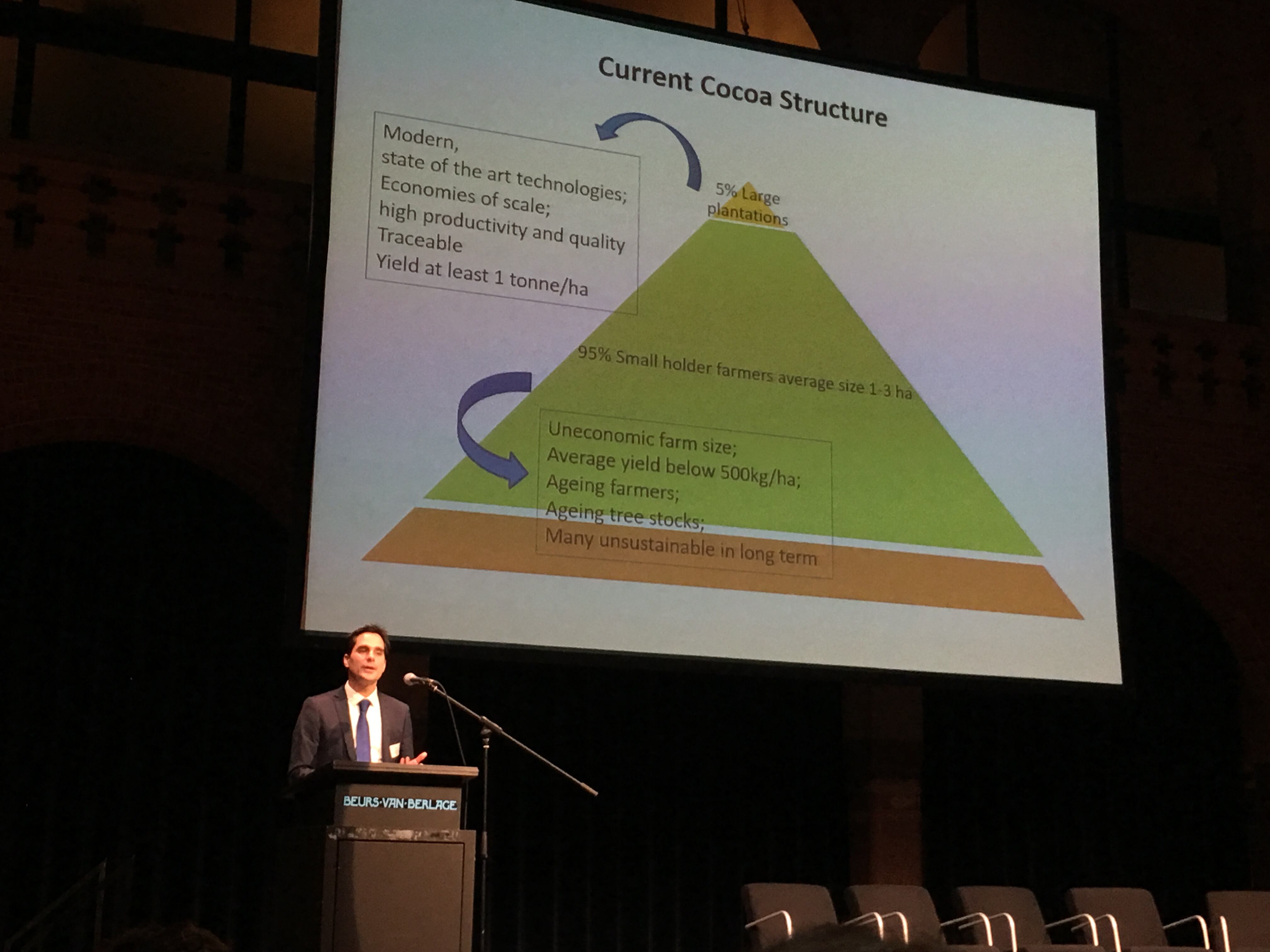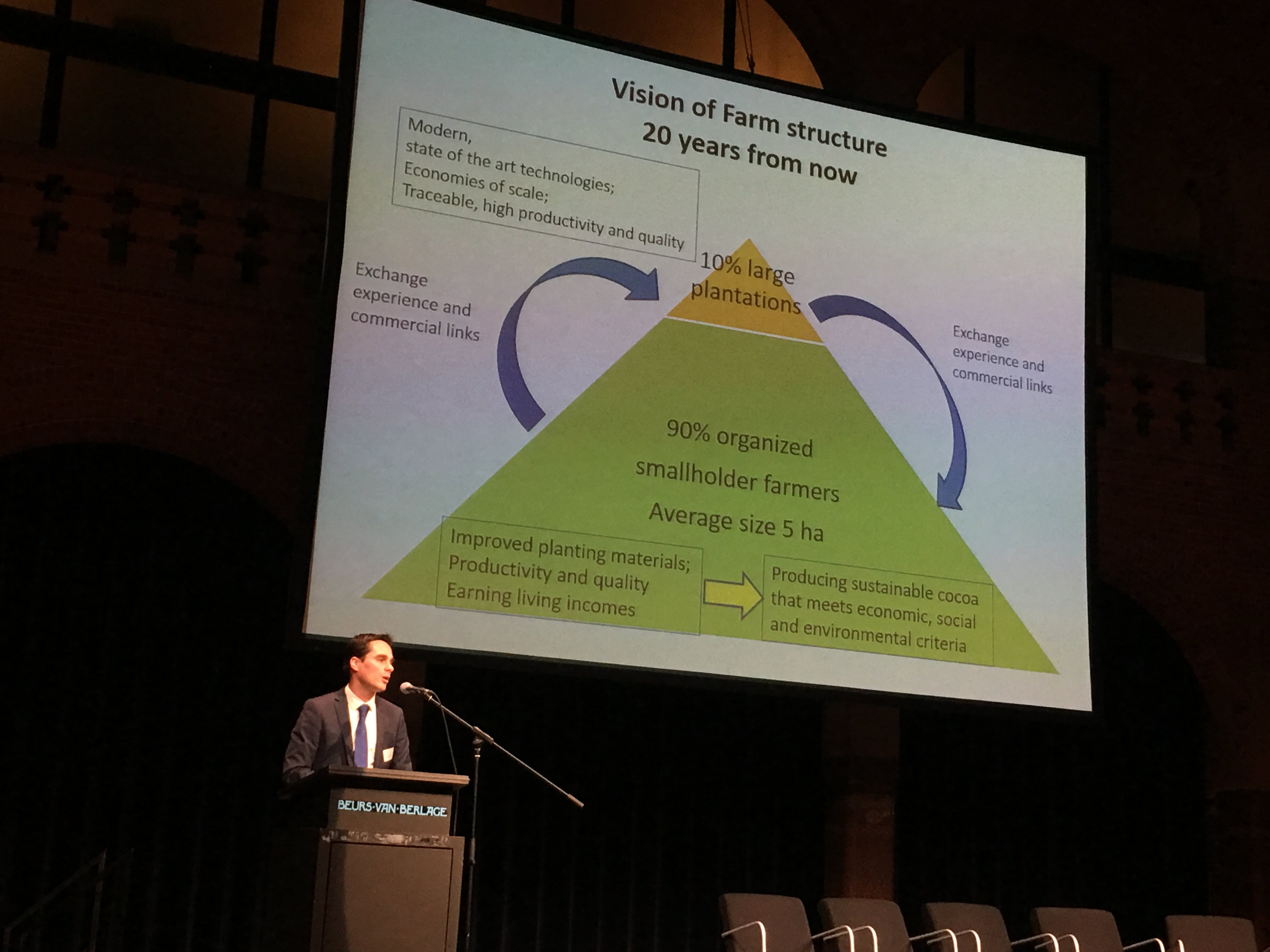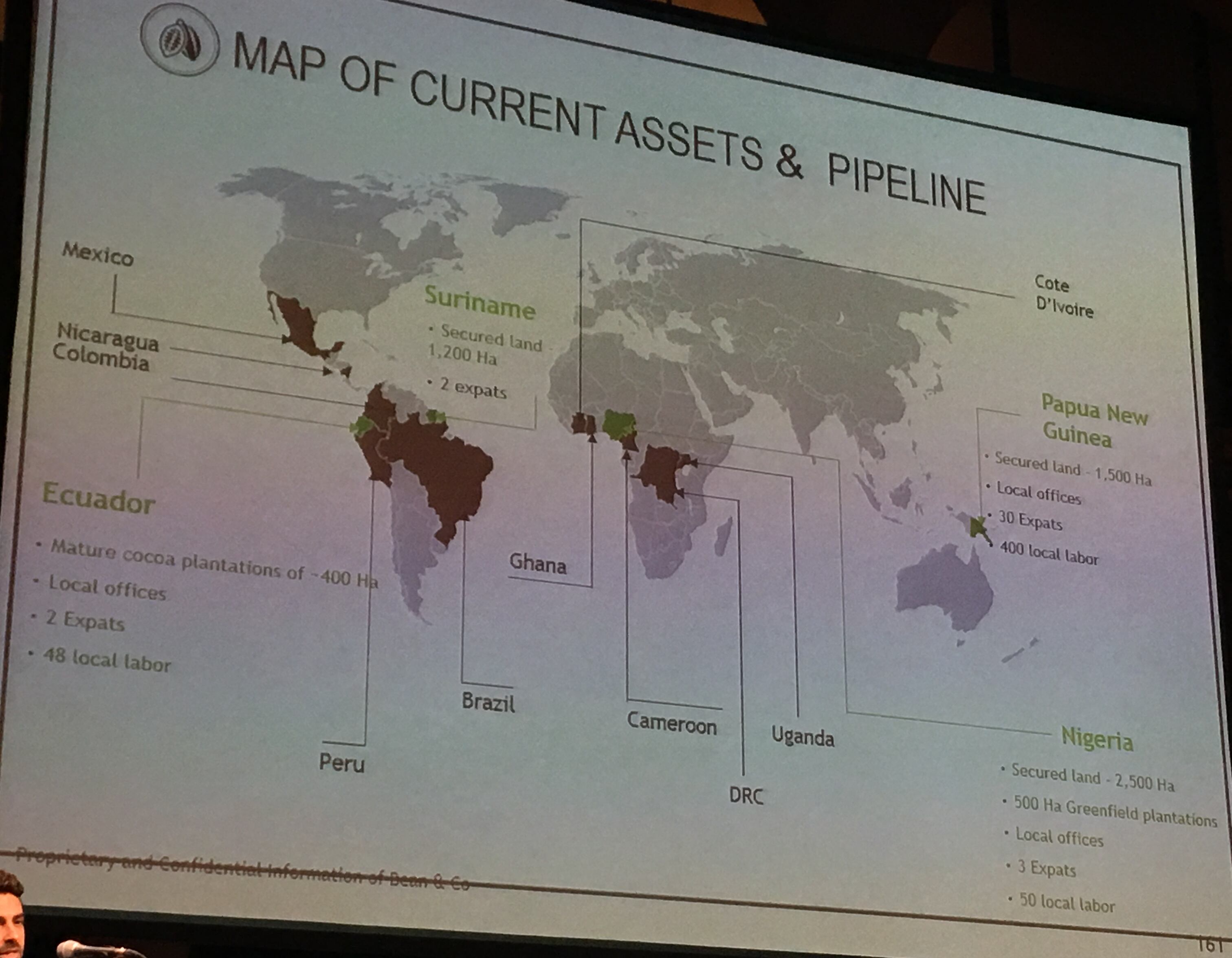It says 95% of the world’s cocoa is currently grown by smallholder farmers, predominantly in West Africa. But it expects the share coming from private companies will increase.
The organization believes commercial plantations can drive technology innovation and pass on knowledge to boost yields for smallholders.
Challenged smallholder sector
Alex Bruijnis, policy officer at the Dutch Ministry of Economic Affairs and Chairman of the ICCO Council, said at the conference Chocoa 2016 in Amsterdam last month: "Cocoa is often described as an orphan crop... The list of challenges are many."

The average farm size for the 95% of cocoa grown by smallholders is between one to three hectares with average yields of below 500 kg per hectare, according to the ICCO.
Smallholder-grown cocoa is typically cultivated by ageing farmers working with ageing tree stocks that are vulnerable to pests and diseases.
"There's a lack of technology transfer and lack of investment in research and development,” said Bruijnis.
"We cannot solve everything in the cocoa chain. There's things that producer countries need to do: Education, infrastructure, there's lots. But we can do more on innovation,” he continued.
Commercial capabilities
The ICCO says the 5% of cocoa grown by commercial plantations today uses state-of-the-art technology to achieve yields of at least one metric ton (MT) per hectare.
"We think they really have potential,” said Bruijnis. “But we see also a downside, which is the high investment costs, which can be very dangerous if the prices were to be low."
"But the ability to drive innovation is clearly bigger for these farms… We hope we can a spillover effect from the centers of innovation to the larger smallholder plantations,” he said.
The ICCO Council chairman said commercial plantations were able to hire agronomists to enhance output and increase resistance to pests and diseases.
Brighter future for smallholders?
The ICCO hopes a knowledge transfer will mean that, by 2036, 90% of cocoa will be grown by an “organized group” of smallholder farmers that have an average farm size of five hectares.
It expects this group will by earning a living income and will be producing sustainable cocoa with high productivity using techniques developed by commercial plantations.

Bean & Co: 40,000 hectares
Bean & Co, a public company incorporated in London and owned by Israeli agribusiness firm LR Group, is one business that will drive the growth of cocoa from commercial plantations.
It already operates cocoa plantations in Nigeria, Ecuador, Suriname and Papua New Guinea. The firm plans to develop new planting areas in Colombia, Peru, Nicaragua, Peru, Côte D’Ivoire, Mexico, Brazil, Ghana, Cameroon, DR Congo, taking its global planting area to 40,000 hectares in the next six years.

“We are the ‘capitalist’ farms trying to modernize and mechanize,” said Johann Dahan, vice president of business development at the company, at Chocoa 2016.
"We have a lot of responsibility towards smallholders in the countries where we are going,” he added.
The firm intends to integrate smallholder farmers in its productivity projects using centers of excellence for training.
The company uses automated fertigation systems it claims help it achieve yields as high as 2.5 MT per hectare.
